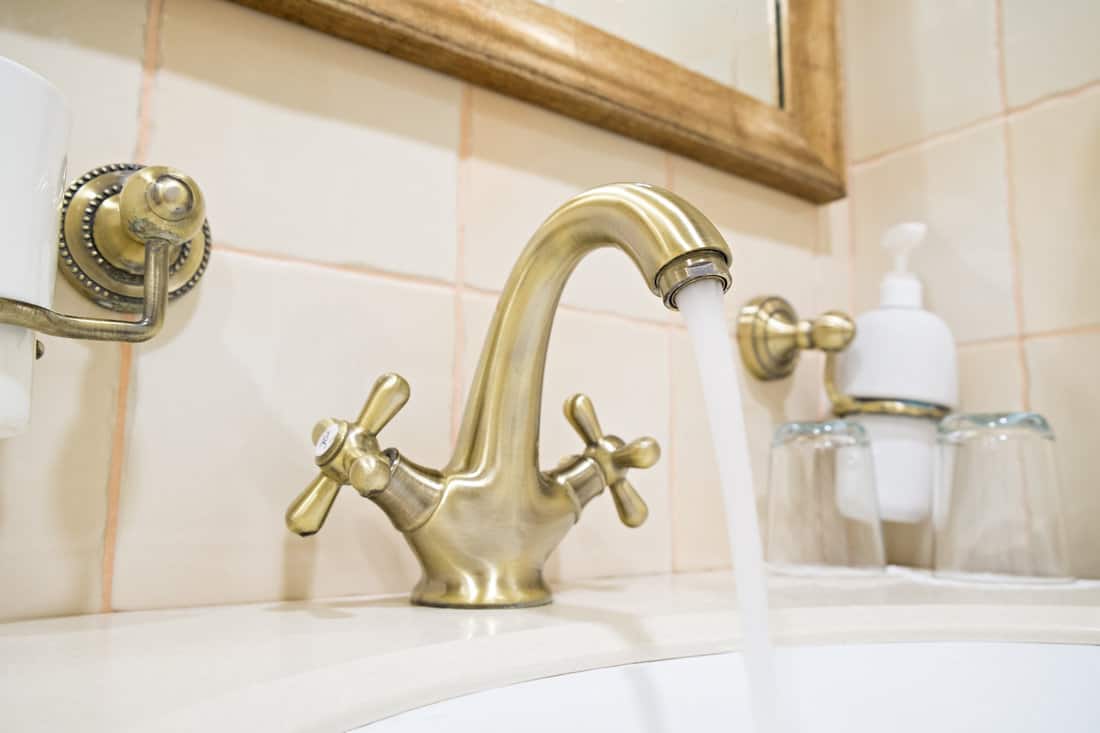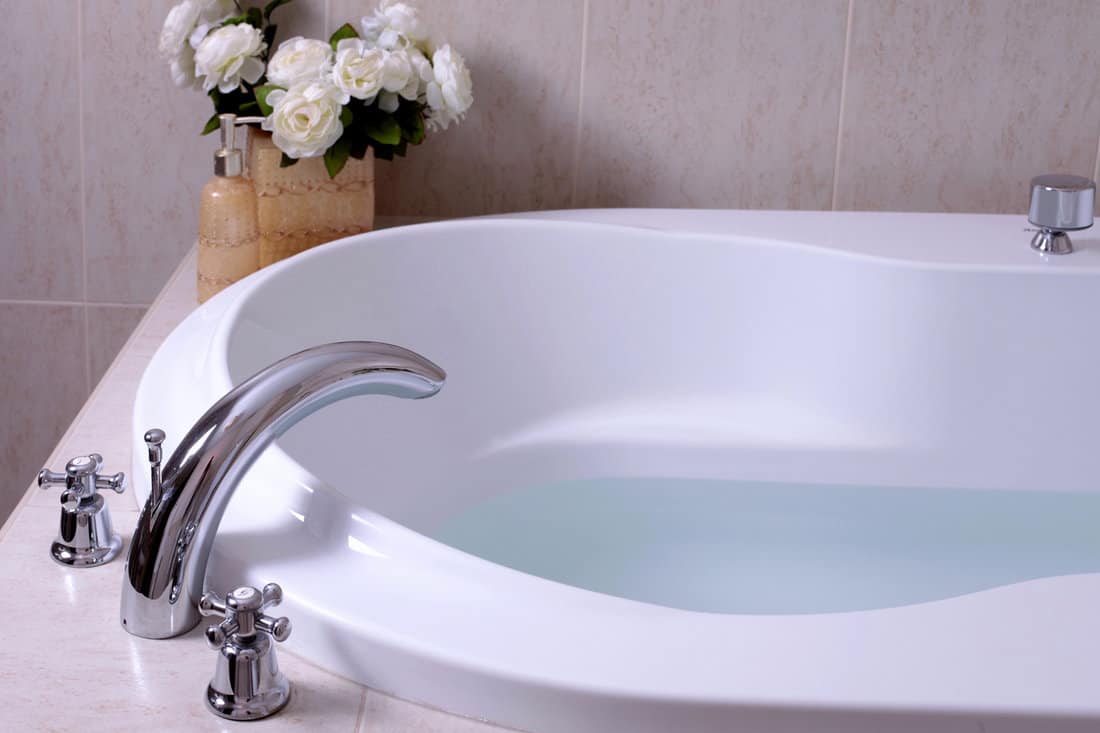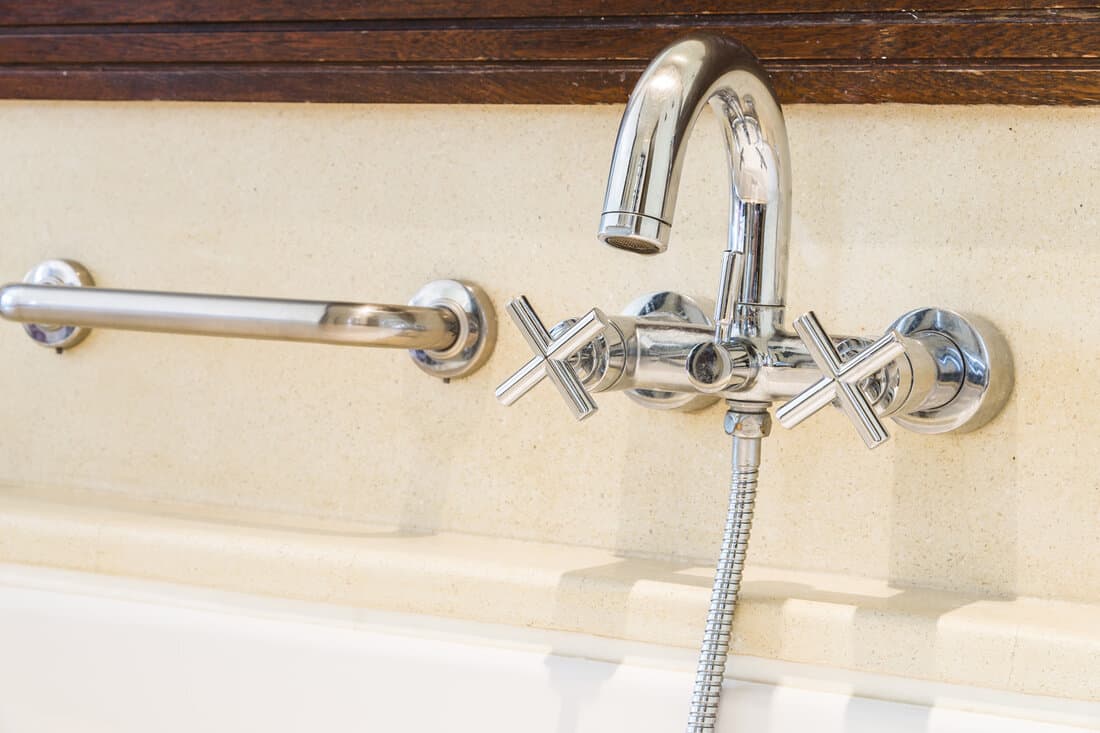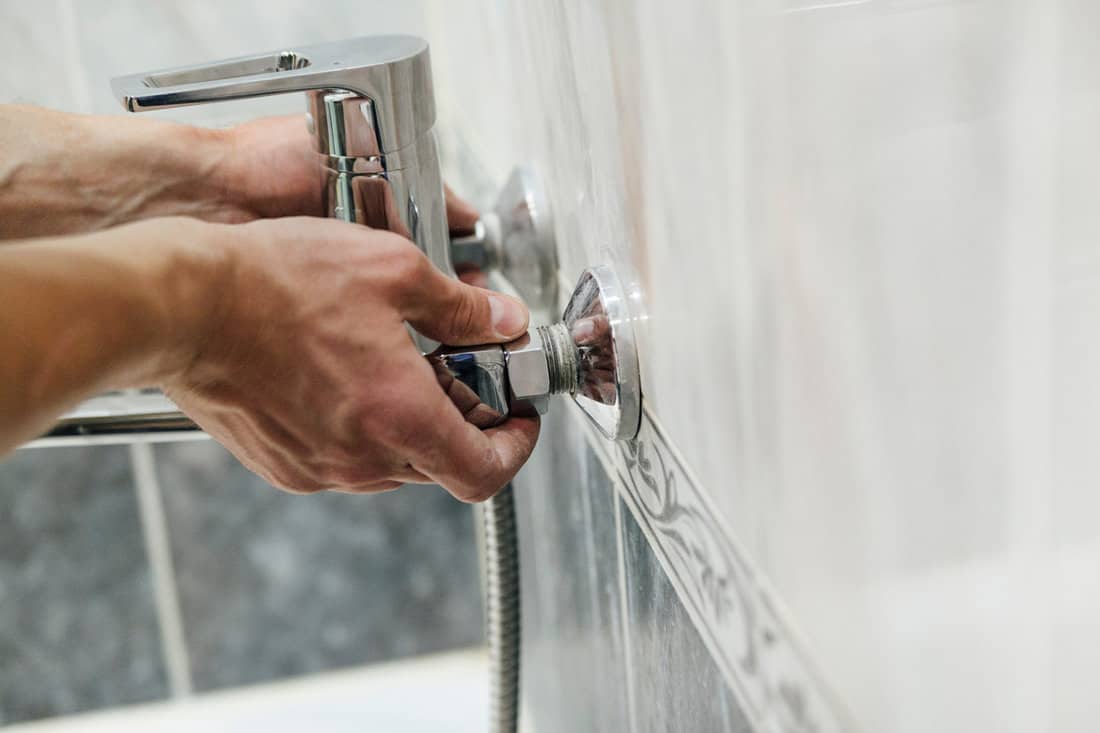If your two-handle bathtub faucet is starting to show its age, you might consider replacing it. Luckily, this is a relatively easy project that most homeowners can tackle on their own. We’ve researched the steps for you to guide you through this project.
Here’s a quick overview of how to replace a two-handle bathtub faucet:
- Shut off the water supply to your bathroom. This is usually done by shutting off the main water supply to your home.
- Remove the old faucet. This will involve removing the handles, the escutcheon plate, and the valve stems.
- Install the new faucet. Start by attaching the valve stems to the new faucet. Then, screw on the escutcheon plate and handles.
- Turn on the water supply and test out your new faucet.
However simple these steps might seem, there are different things you need to consider in your new bathroom fixture. These include other options, when you should fix or replace your faucet, how much it costs, and other considerations. Keep reading to learn more!
To Fix Or Replace A Two Handle Faucet?
Experts generally recommend replacing a two-handle bathtub faucet every 15 to 20 years to keep your system working optimally. Of course, you can replace a two-handle faucet using the previously mentioned steps, but hiring professionals to do this ensures an error-proof job.
However, if you notice any leaks or drips, it’s best to fix them as soon as possible to avoid further damage.
How Much Does Faucet Replacement Cost?
The cost of fixing or replacing a two-handle bathtub faucet will vary depending on the type of faucet and the extent of the damage. However, it’s generally not a very expensive repair.
Typically, a brand-new two-handle faucet will cost between $25 and $50. On the other hand, a replacement part can cost as little as $10. Add the professional fees for repair, installation, and other services for the total cost can range from $100 to $200.
How Do You Fix A Leaky Faucet With Two Handles?

Suppose you don’t need to replace the bathtub faucet. Fixing it and ensuring there are zero leaks is a more affordable alternative.
First, you’ll need to replace the packing washer on the stem in cases of leaks or drips. To do this, remove the handle, unscrew the packing nut, and then replace the packing washer. If the packing nut has corroded, you may also need to replace it.
Suppose the leak is coming from the spout. In that case, you replacing the O-ring is a must.
Furthermore, if your faucet has two handles, it’s most likely a compression faucet. To fix a leaky compression faucet, follow these steps:
- Turn off the water to the faucet. There are usually two valves under the sink—one for hot water and one for cold water. Turn both valves to the “off” position.
- Use a screwdriver to remove the screw that holds the handle in place.
- Pull the handle off the faucet.
- Use a wrench to loosen the packing nut. This is the nut that holds the packing material in place.
- Remove the old packing material and replace it with new packing material.
- Tighten the packing nut and reattach the handle.
- Turn on the water valves and check for leaks.
A leaky faucet can cost you a staggering 3,000 gallons a year or 60 drips per minute. This adds around $60 to your bill annually (at $.02 per gallon), not to mention the environmental impact.
What Are The Different Types Of Bathtub Faucets?

There are numerous types of bathtub faucets on the market today. The most common type is the two-handle faucet, which has a hot and cold water handle and a spout in the middle. There are also single-handle faucets with only one handle that controls hot and cold water. Finally, there are wall-mounted faucets, which you mount on the wall behind the bathtub.
Here are other types of bathtub faucets worth considering:
- Wall Mounted: You typically mount these faucets on the wall above the bathtub. They’re common in small bathrooms where there’s not enough space for a countertop faucet.
- Freestanding: These faucets are not attached to the wall or countertop. They’re ideal for clawfoot tubs or if you want a more traditional look in your bathroom.
- Handheld Shower: These faucets have a detachable shower head that can be used for bathing. they’re convenient if you have a small bathroom or if you want to be able to move the shower head around.
- Rain Shower: These faucets have a large shower head that is mounted on the ceiling. They create a rain-like showering experience and are often used in luxury bathrooms.
Whichever fixture you choose boils down to what your bathroom needs.
How Do I Know Which Bathtub Faucet To Buy?

There are many factors to consider when purchasing a bathtub faucet.
Fixture Size & Shape
Some things to keep in mind are the size and shape of your tub and your personal preference. You’ll also want to think about whether you want a single-handle or double-handle faucet and the type of finish you prefer.
It’s always a good idea to consult with a plumbing professional to get their expert opinion on which bathtub faucet would be best for your specific needs, especially the size faucet you have.
Hardware Reviews & Warranties
Furthermore, you can check out online reviews to get an idea of which brands and models are most popular and highly rated. This can be a helpful way to gauge the quality and see what others have had good or bad experiences with.
Some reviews can also provide information on a brand’s warranty.
Are Bathtub Faucets Standard Size?
Perhaps the most critical thing you must consider when replacing your bathroom faucet is whether it’s the standard size. These dimensions are generally standard, but you’ll want to double-check before you make a purchase.
The standard bathtub faucet size is 4 inches, and the standard bathroom sink faucet size is 8 inches. You should also be aware that there is a standard hole size for all faucets. The hole should be 1 3/8 inches in diameter, so make sure you get a faucet that will fit.
If you have an older home, you may have a non-standard size, which means that you’ll have to have your faucet specially made. This is a more expensive option, but it’s the only way to get what you want.
All In All

Fixing, replacing, or upgrading to a two-handle faucet is a relatively easy and inexpensive project. Depending on the severity of the issue, you can fix the faucet yourself.
If you need to replace the faucet, you can find a wide variety of two-handle faucets at most hardware stores. All in all, upgrading to a two-handle faucet may be a bit more expensive, but it will offer better control over the water flow and temperature.